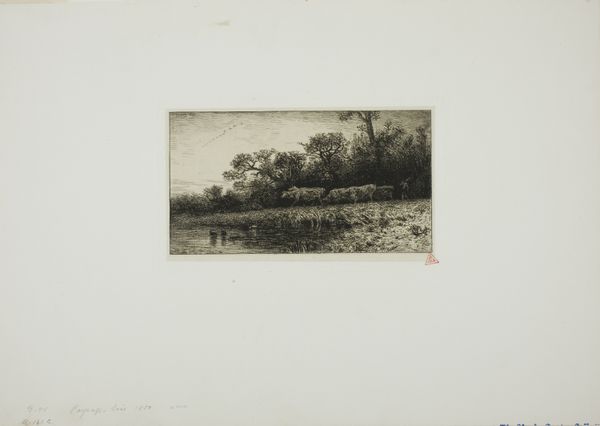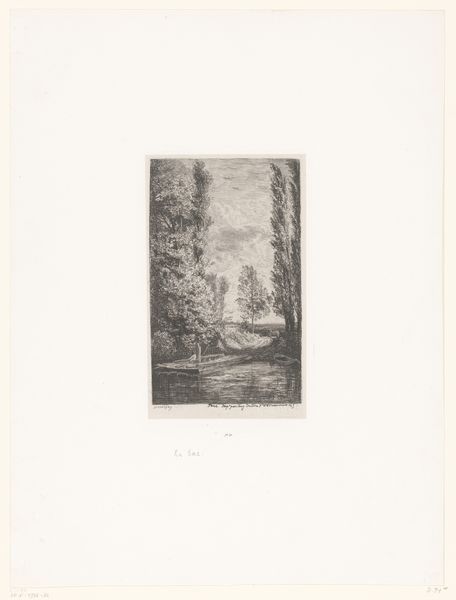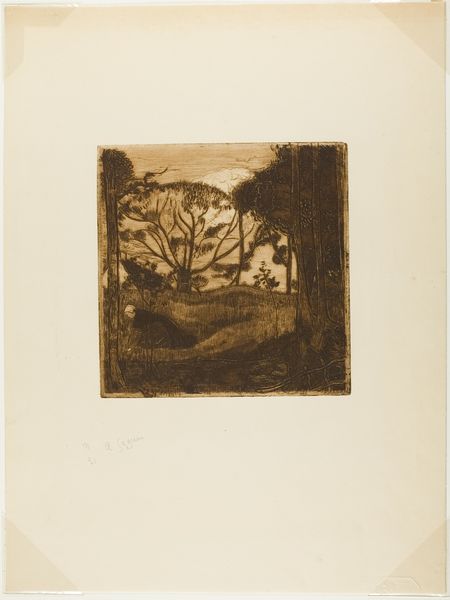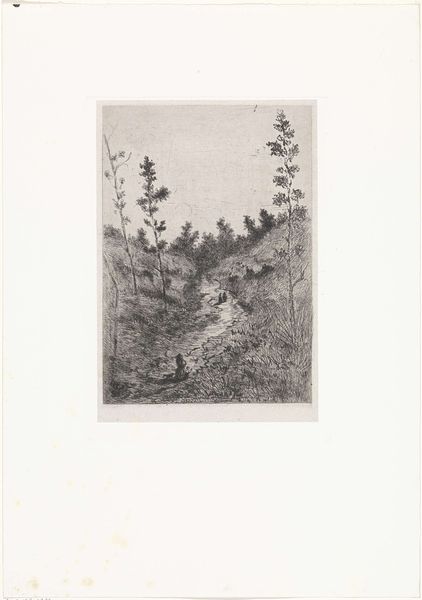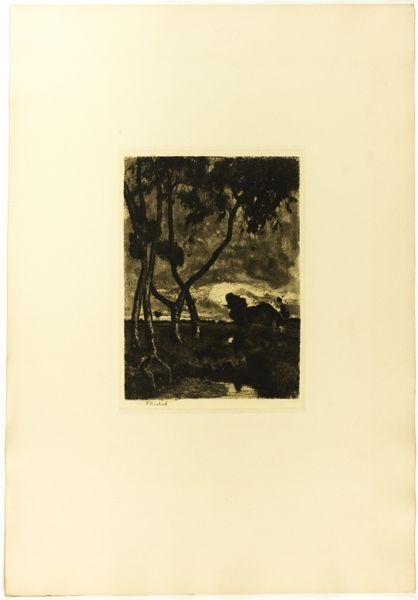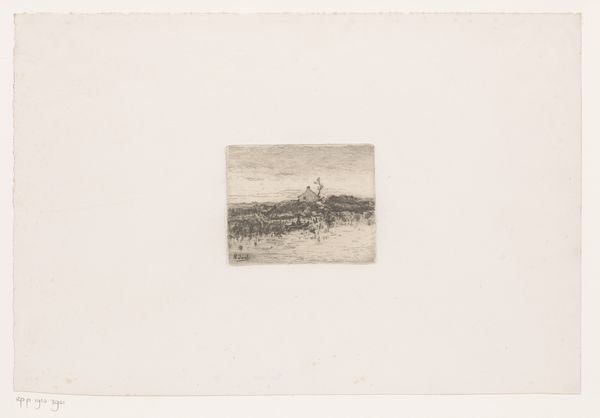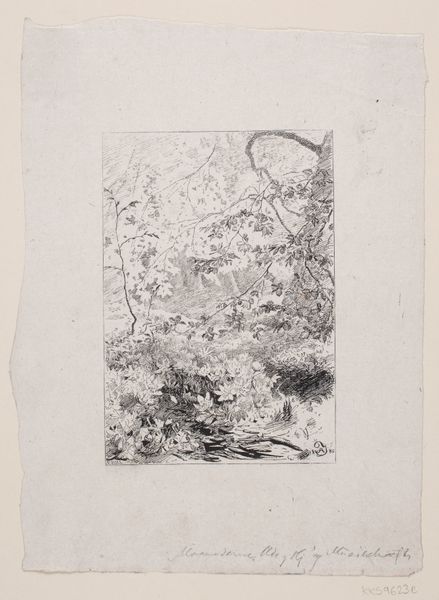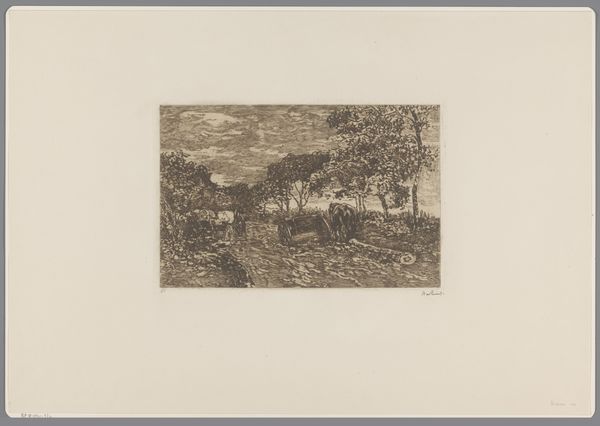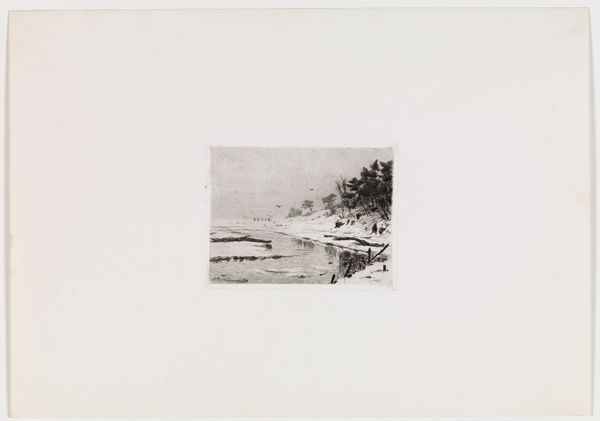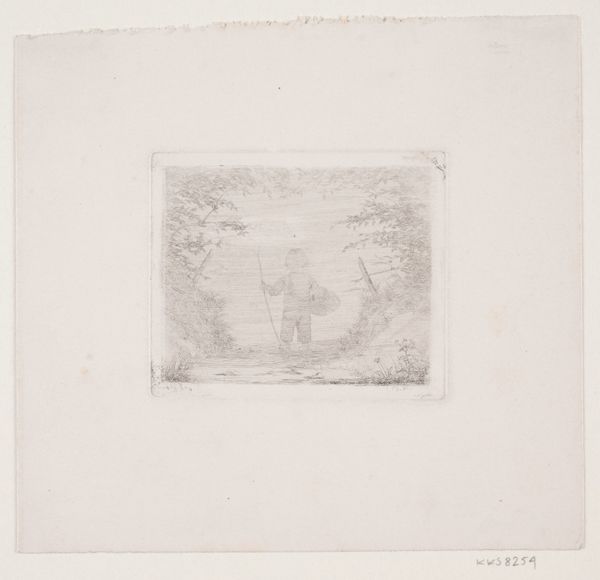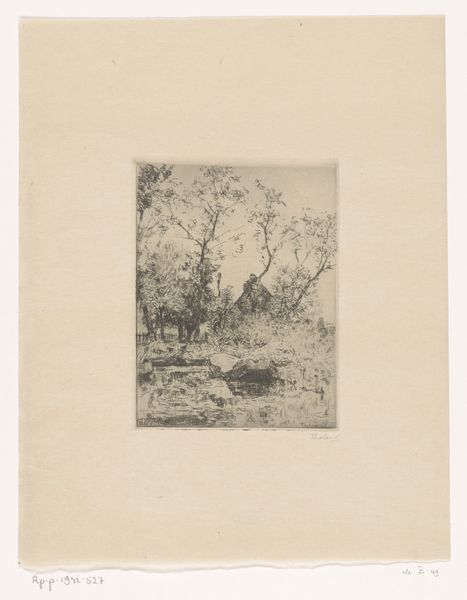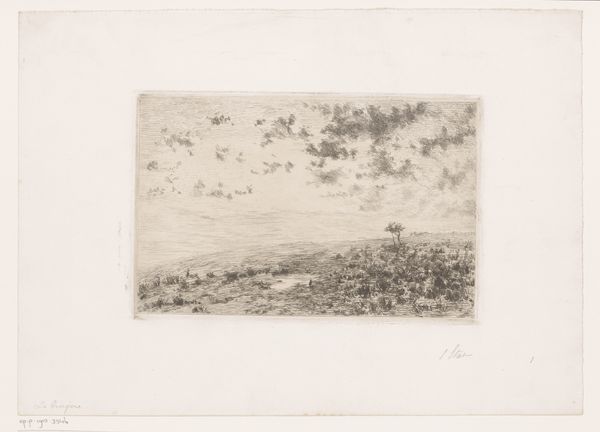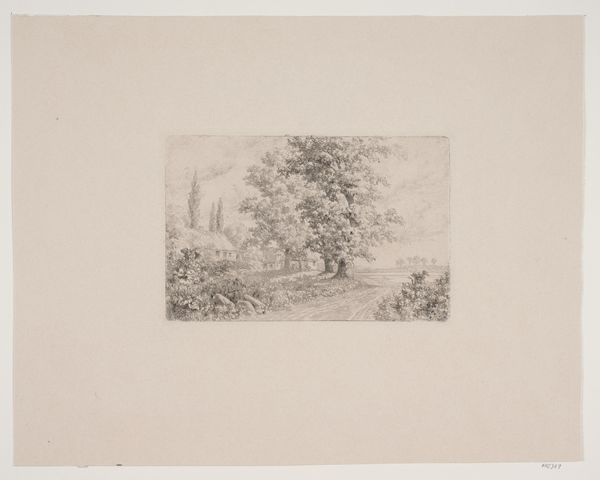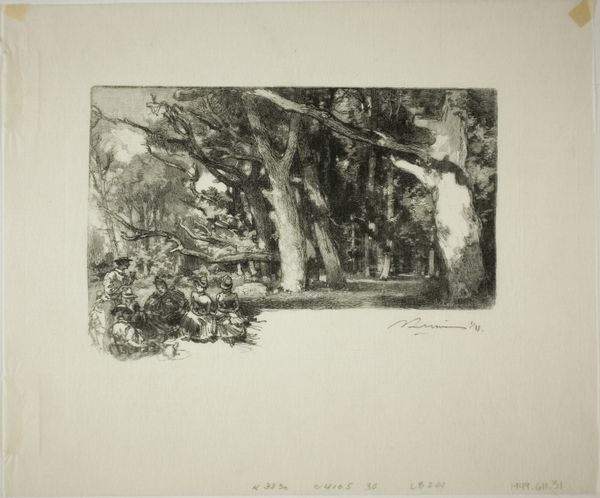
drawing, print, etching, plein-air, paper
#
drawing
# print
#
etching
#
plein-air
#
landscape
#
paper
#
england
#
romanticism
#
line
#
natural texture
#
tonal art
#
realism
Dimensions: 116 × 180 mm (plate); 128 × 185 mm (chine); 305 × 447 mm (sheet)
Copyright: Public Domain
Curator: Looking at this print, "An Old Bridge at Salisbury" by John Constable, circa 1826, I'm immediately struck by its almost melancholic quality. The landscape is rendered with a remarkable lightness, almost sketch-like in its detail. Editor: It feels very much like an artist's working proof, a piece pulled as they assess the image, test their skill with line and tone, before deciding on a final printing. Curator: Precisely. This is an etching, after all. It seems Constable aimed to capture a directness often lost in larger, more finished works. Think of it placed within the broader history of British landscape painting, the rise of picturesque tourism... Salisbury represented more than just a location. It became a symbol of rural England during a time of great social and economic change. Editor: The bridge, of course, appears as a powerful symbolic form, acting as both connector and threshold. In the composition here, the image itself feels like a crossing from a darkened foreground to an area of openness and light in the background. Is that Salisbury Cathedral I can see rising from beyond the trees? Curator: Good eye! Yes, the Cathedral does seem to be rendered in the distance, though the line is less certain there than around the forms in the fore. The placement of the church in this image really brings home the relationship between nature, societal structure, and religious ideology. Editor: I also read a kind of yearning into Constable's technique here. The Romantic period emphasized emotion, after all, and that broken line creates a texture within the natural elements. Perhaps he's showing how the sublime is not always neat, how nature presents a chaotic face, too. Curator: Or that even our "natural" symbols and sublime structures are mediated. Think about the work required to portray the natural as something consumed by a rapidly developing art market! Editor: I appreciate the subtle tonal shifts, too. They lend the image a sense of depth and atmosphere, reminding us that the Romantics were deeply interested in evoking a feeling in the viewer. It's interesting to see Constable explore his atmospheric impulses through such simple etching techniques. Curator: Exactly! In that way it stands apart from some of his larger, grander exhibition paintings. An important piece for understanding the period in Britain as well as Constable's growth as an artist in particular. Editor: And I now see something fresh in the image, having contemplated the complex associations such a pastoral vision of Salisbury provokes.
Comments
No comments
Be the first to comment and join the conversation on the ultimate creative platform.
